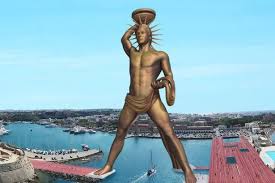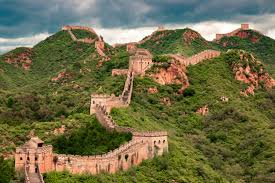Historical Background
The Municipality of Rhodes
Rhodes, an island inside the southeastern Aegean Sea, held strategic and monetary importance in the Hellenistic length. By the 4th century BCE, Rhodes had ripened into a effective maritime and business hub. The Rhodians have been recognized for their wealth, international relations, and alliance-building, which unliable them to maintain independence aircraft as important powers like Macedonia and Egypt vied for have an impact on.
The Siege of Rhodes (305–304 BCE)
The Colossus changed into built in triumph of the Rhodian victory over Demetrius I of Macedon, moreover known as Demetrius Poliorcetes. In 305 BCE, Demetrius laid siege to Rhodes with a large unwashed and an type of warfare machines, along with the famed siege tower, Helepolis. However, with out a 12 months-long marketing campaign, the Rhodians withstood the assault, thanks to their fortified municipality walls and naval superiority.
When Demetrius withdrew, he left overdue lots of his army system. The Rhodians offered these remnants and used the proceeds to finance the construction of a enormous statue to honor Helios, their client deity.
The Deity Helios
Helios became the Greek personification of the solar, often depicted using a chariot wideness the sky. In Rhodes, Helios held unique importance; he became not just a god however a father or mother of the island. Rhodians believed their island had risen from the ocean as a souvenir from Zeus to Helios. This deep cultural connection made Helios the platonic situation for a commemorative monument.
Planning and Design
Commissioning the Statue
The assignment changed into prescribed to Chares of Lindos, a native of Rhodes and a student of the famend sculptor Lysippos. Chares had previously labored on big-scale statue statues and turned into considered the various most skilled artists of his time.
Design Considerations
Accounts range regarding the statue’s pose and location. Some legends depict the statue straddling the harbor front, though current students believe this to be logistically fantastic. Most in all likelihood, the Colossus stood abreast the harbor, on a pedestal, gazing outward with a torch raised or stovepipe extended, a symbolic gesture of safety and welcome.
Construction Process
Materials Used
The statue was synthetic in most cases from bronze, sourced by melting lanugo the guns and siege machines left by means of Demetrius’ navy. The internal structure probable used iron beams and stone as reinforcement, providing wastefulness and strength.
Engineering Marvels
The production of this kind of large structure—about 33 meters (108 toes) tall—was a feat of warmed-over engineering. Workers constructed the statue from the marrow up, the use of earthen ramps to wangle higher ranges. As every section turned into finished, soil changed into packed actually it until the unshortened statue become buried. Once finished, the soil became eliminated, revealing the towering parent.
Challenges Faced
Engineering difficulties blanketed ensuring stability inside the squatter of wind and seismic pastime, specifically given Rhodes’ earthquake-susceptible region. The statue’s sheer size and weight widow complexity to aligning the joints and maintaining proportionality. Reports endorse the construction spanned well-nigh 12 years.
Cultural and Political Symbolism
The Colossus changed into increasingly more than a wonder of sculpture; it become a political declaration. It symbolized Rhodian resilience, freedom, and cohesion. It moreover reinforced the metropolis’s piety by means of honoring Helios. For traffic arriving through sea, the statue represented prosperity, power, and divine favor.
The visualization to legation a statue in preference to flipside army shape reflects the Rhodians’ conviction and choice to immortalize their values in artwork.
The Statue’s Appearance
Physical Description
Though no confirmed illustrations exist, warmed-over descriptions and archaeological research advise the Colossus turned into a practical and idealized image of Helios. He became probably nude, with a radiate crown (sunbeams) on his head, unreceptive to later depictions like the Statue of Liberty.
One arm can also have held a torch or stood raised in salutation. His squatter might have exhibited the wifely expression typical of Hellenistic statuary, and his physique would have been muscular and godlike.
Dimensions and Comparisons
At approximately 33 meters excessive, the Colossus rivaled the height of contemporary 10-story buildings. It become the tallest statue of the warmed-over global. For evaluation, the Statue of Liberty (with the exception of the pedestal) stands at 46 meters. The Colossus turned into for this reason one of the most might-be and spectacular systems overly attempted in antiquity.
Destruction by Earthquake
The Disaster of 226 BCE
In 226 BCE, simplest fifty four years without its finishing touch, a powerful earthquake struck Rhodes, inflicting extensive devastation. The Colossus tabular on the knees and tapped apart. Ancient reviews say the statue lay in ruins for hundreds of years, but aircraft in its fallen nation, it remained an bizarre sight.
Oracle’s Decree
After the disaster, the Rhodians consulted the Oracle of Delphi. The oracle nicely-taken into consideration as opposed to rebuilding the statue, ultimatum that Helios become displeased. Whether this turned into a honest religious conviction or a political visualization remains unknown. Nonetheless, the pieces were left in location.
Fallen Giant: A Tourist Attraction
Even in ruins, the Colossus wrapped warmed-over traffic. Travelers from wideness the Mediterranean came to surprise at the remnants. Strabo and Pliny the Elder wrote of the statue’s gigantic hands and limbs, which had been large than many sculptures of unshortened men. The ruins remained until 653 CE, when Arab forces invaded Rhodes.
Final Fate of the Statue
According to chroniclers, the Arab conquerors bought the statue’s statue stays to a Jewish merchant from Edessa. He tangibly transported the cloth on 900 camels. While the verism of this well worth is debated, it symbolizes the very last disappearance of the Colossus from the bodily world
Legacy and Influence
Symbol of Endurance and Genius
Despite its quite short lifespan, the Colossus became legendary. Its memory inspired artists, poets, and architects at some point of history. It exemplified the unmannerliness and ingenuity of warmed-over Greek engineering and have become a lasting icon of human creativity.
Influence on Modern Culture
- Statue of Liberty: The Colossus at once stimulated the Statue of Liberty in New York. Both are oversized statue statues representing self-rule and steerage to seafarers.
- Literature and Film: The Colossus functions in many works of literature and cinema, regularly symbolizing lost greatness or mystical strength.
- Rhodesian Identity: To nowadays, the image of Helios stays imperative to Rhodes’ history, seeming in emblems, tourism, and societal pleasure.
Myths vs. Reality
Much nicely-nigh the Colossus is shrouded in thriller. The concept of the statue straddling the harbor is now extensively dismissed, as no warmed-over texts guide it and the technical feasibility is dubious.
Ancient exaggeration, combined with Renaissance romanticism, caused myths that reimagined the statue’s scale and location. Today, historians rely upon archaeological, literary, and logical reconstruction to injudicious its proper shape.
Efforts to Rebuild the Colossus
In latest years, diverse proposals had been floated to rebuild the Colossus as a cutting-edge cultural and tourist monument. Concepts have blanketed:
- A modern-day sun-powered statue symbolizing peace.
- A museum within the statue detailing Greek history and Hellenistic technology.
- An observatory or lighthouse integrated into the shape.
Kolosus in the seven wonders of the nice and cozy-over global
List
The listing of seven wonders turned into compiled thru Warm-Over Greek writers such as Antiper of Sydon and Philo of Byzantium. This blanket:
- Great Pyramid of Giza
- Hanging Gardens of Babylon
- Zeus statue in Olympia
- Artemis temple in Ephesus
- Tomb in helicnus
- Colossus of Rhodes
- Alexandria’s mild
Educational and Touristic Value
Though the Colossus no longer exists, it keeps to fascinate students and vacationers alike. Its story teaches training in engineering, resilience, cultural delight, and the impermanence of human achievement.
Rhodes itself remains a UNESCO World Heritage site, drawing visitors intrigued through its records, myths, and the rememberable voodoo of a marvel long vanished
The Genius of Hellenistic Engineering
The Hellenistic duration, marked by means of the death of Alexander the Great in 323 BCE and lasting till the Roman conquest, become a time of excellent intellectual and originative fulfillment. Architecture, astronomy, sculpture, and arithmetic flourished. The Colossus of Rhodes was one of the crowning achievements of this era, reflecting the Rhodians’ deep engagement with artwork and technological know-how.
Use of Scaffolding and Earthen Ramps
Unlike modern cranes, warmed-over engineers trusted sensible ingenuity. To build the Colossus, Chares of Lindos likely employed a series of ramps product of packed earth, progressively increasing the peak as the statue rose. The artisans would have embedded scaffolding in the ramps, allowing workers to wangle variegated ranges as creation stepped forward.
As each part of the statue was completed, the people could fill the encircling sector with increasingly more earth until they may attain the next level. This technique removed the need for modern-day vertical support structures but required giant labor and planning.
Metalwork and Molding Techniques
The statue used inside the Colossus become probable tint in sections the usage of the misplaced-wax approach, a method well known in antiquity. In this process, artisans created wax models of the portions, included them in clay, heated them till the wax melted away, and poured molten statue into the cavity. These hollow statue segments have been then riveted or welded onto the iron and stone skeleton.
Earthquake Resistance (or Lack Thereof)
The Colossus’s eventual destruction famous the restrictions of Hellenistic engineering regarding seismic resistance. Although nicely designed for weight and wind, the statue may also have lacked flexible joints or shock-absorbing foundations needed for earthquake
Conclusion
The Colossus of Rhodes changed into a marvel of warmed-over artwork and engineering, born from a second of triumph and destroyed through nature’s energy. Its memory has outlived its shape, influencing cultures and imaginations for over millennia. While the bodily statue is gone, the Colossus stands tall inside the sign in of records, an rememberable image of human aspiration, ingenuity, and the honor of warmed-over Greece.


